Bulbs
Flower Basics
Flower Beds & Specialty Gardens
Flower Garden
Garden Furniture
Garden Gnomes
Garden Seeds
Garden Sheds
Garden Statues
Garden Tools & Supplies
Gardening Basics
Green & Organic
Groundcovers & Vines
Growing Annuals
Growing Basil
Growing Beans
Growing Berries
Growing Blueberries
Growing Cactus
Growing Corn
Growing Cotton
Growing Edibles
Growing Flowers
Growing Garlic
Growing Grapes
Growing Grass
Growing Herbs
Growing Jasmine
Growing Mint
Growing Mushrooms
Orchids
Growing Peanuts
Growing Perennials
Growing Plants
Growing Rosemary
Growing Roses
Growing Strawberries
Growing Sunflowers
Growing Thyme
Growing Tomatoes
Growing Tulips
Growing Vegetables
Herb Basics
Herb Garden
Indoor Growing
Landscaping Basics
Landscaping Patios
Landscaping Plants
Landscaping Shrubs
Landscaping Trees
Landscaping Walks & Pathways
Lawn Basics
Lawn Maintenance
Lawn Mowers
Lawn Ornaments
Lawn Planting
Lawn Tools
Outdoor Growing
Overall Landscape Planning
Pests, Weeds & Problems
Plant Basics
Rock Garden
Rose Garden
Shrubs
Soil
Specialty Gardens
Trees
Vegetable Garden
Yard Maintenance
Why do Some Tomato Plants Bloom But Produce No Fruit?
Why do Some Tomato Plants Bloom But Produce No Fruit?. Tomato gardening, while not particularly difficult, can prove frustrating when your plants seem healthy, are blooming regularly but don't produce any tomatoes. The anatomy of the tomato blossom determines what needs to occur for successful pollination, which will result in your plants yielding...
Tomato gardening, while not particularly difficult, can prove frustrating when your plants seem healthy, are blooming regularly but don't produce any tomatoes. The anatomy of the tomato blossom determines what needs to occur for successful pollination, which will result in your plants yielding fruit.
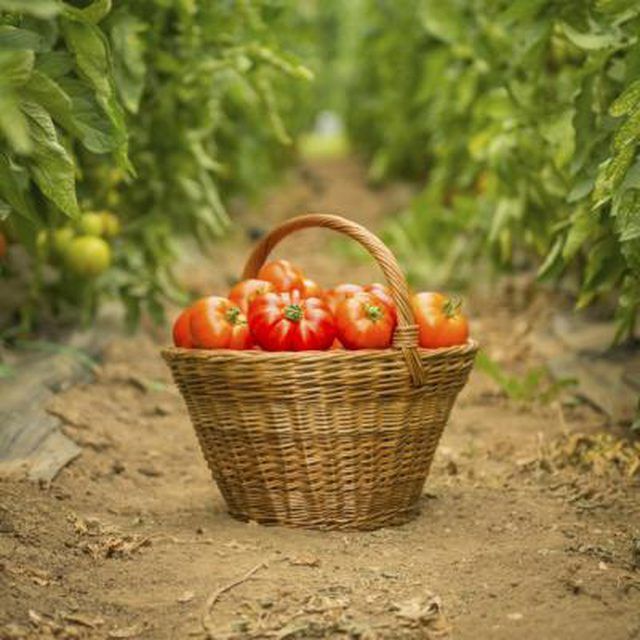
The tomato blossom is made up of several parts. The outermost, green part is formed of "sepals"' Together, all the sepals of one blossom are referred to as the "calyx." The calyx acts as a protective barrier for the bud as it matures.
Just inside the calyx are the brilliant, yellow petals, which as a group are referred to as the "corolla." The sole purpose of the corolla is to attract bees or other insects to act as pollinators.
Within the corolla, the gender of each blossom becomes apparent. In some, there are "stamens," or male reproductive organs, each of which consists of two joined, elongated chambers. In total, there are six stamens in each male tomato blossom. They are fused together into a yellow, cylindrical shape.
The organs of the female blossom are called "carpels" and are green and bulb-like in nature, containing the ovules which will eventually become seeds. Carpels are the structures in which fertilization takes place and range in quantity from flower to flower. They correspond directly with the seed pockets found within the mature fruit.
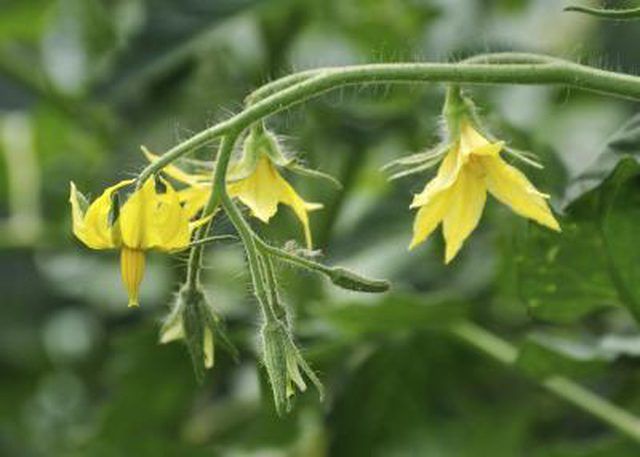
Tomato plants are known to be "self-fertile," which means they do not require the pollen of other plants in order to procreate. However, there is some argument about whether or not the plants should also be considered "self-pollinating." The objection behind this debate is that the term "self-pollinating" would seem to imply that no outside sources would be required for the act of pollination to take place. This is simply not the case. Pollination still needs to be facilitated by some means. If your plants are not bearing fruit, it is quite likely that pollination is not occuring. There are various ways in which you can assist in pollinating your plants, which will vary in effectiveness based on conditions.
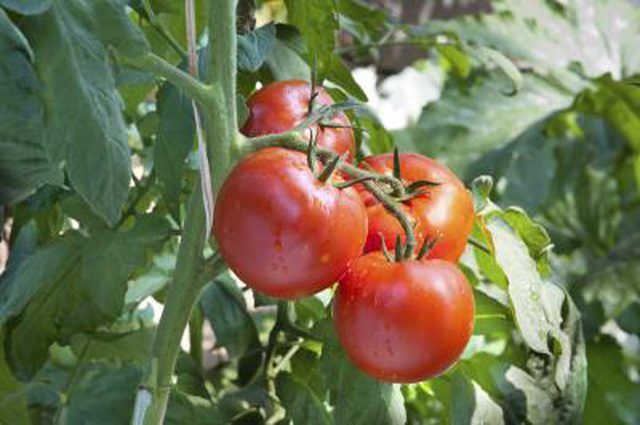
Bees and some other insects provide an invaluable service to gardeners by acting as agents of pollination. By landing on flowers, the bees are dusted with pollen, which they can then transport to another flower, completing the pollination cycle. Another amazing ability that bees have is called "sonication." This is a process by which the rapid beating of the bees' wings vibrates the pollen particles into motion. The pollen can then waft down to other flowers or land on the bee to be transported.
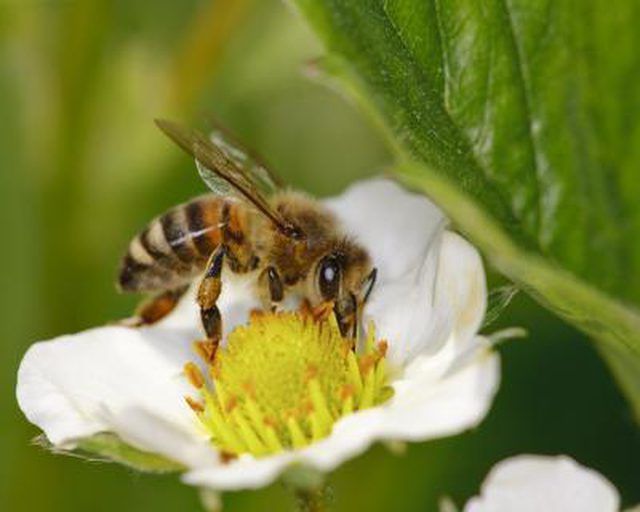
Pollination can also occur when pollen particles becomes airborne and drift to a blossom in need of fertilization. The wind can aid in this type of pollination, but sometimes the wind isn't enough to dislodge and carry the pollen to another bloom. In cases such as this, an industrious gardener can promote the process by shaking his plants. While it sounds counterintuitive to shake a plant one has previously nurtured, it's very common practice to give the base of your tomato plants a careful yet vigorous shake to get the pollen moving.
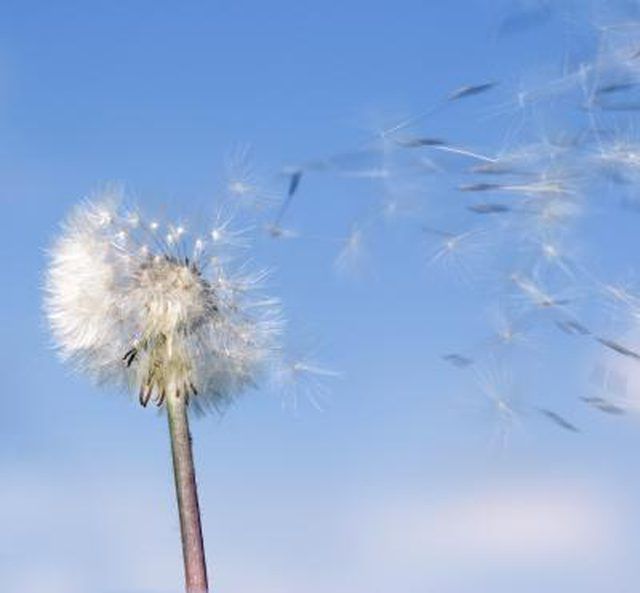
When the simpler methods fail, one can take a more active role in pollination by attempting to simulate the actions of the bee. By taking a cotton swab or soft artist's brush, pollen can be collected from male blossoms, denoted by their yellow, cylindrical core and distributed to the female blossoms differentiated by their green, bulbous appearance. In this way, a gardener can choose which variety of plants to cross-pollinate with.
If all goes well, instead of your tomato blossoms withering, you will see tiny, green tomatoes start to form on your plants. There can be no greater reward for a tomato gardener who has struggled with fruitless vines than to see her efforts rewarded and have the knowledge that in a few short weeks, she will be enjoying the fruits of her labor.